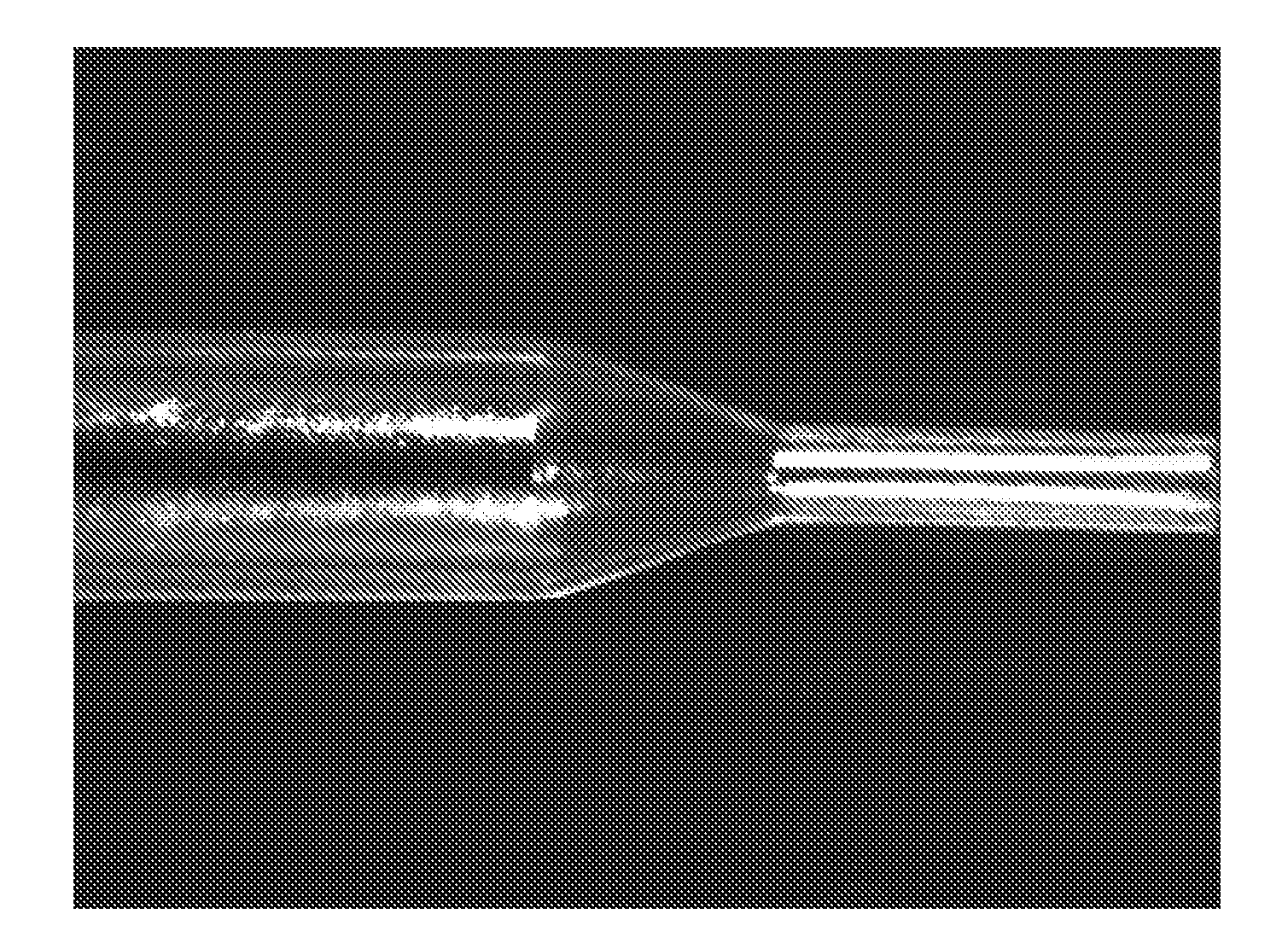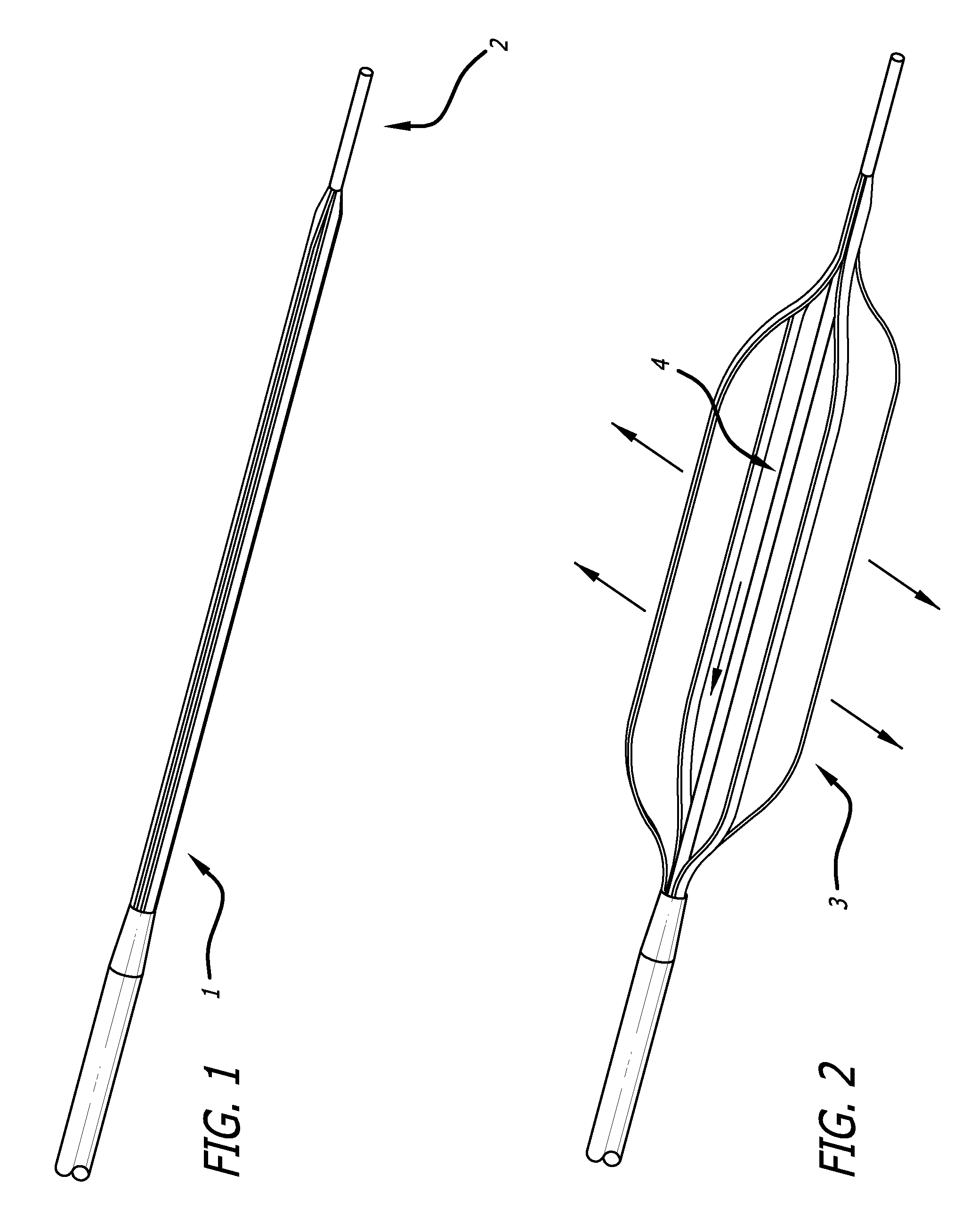Drug eluting expandable devices
a technology of expandable devices and expandable materials, which is applied in the direction of drugs, prostheses, catheters, etc., can solve the problems of difficult adherence of polymeric coatings to substantially different substrates, cumbersome mixing of custom ph solutions, and inability to adjust the ejection force, etc., to achieve robust adhesion of bioactive materials, reduce ischemic events during deployment, and reduce the effect of rewrapping, thickness and flexibility
- Summary
- Abstract
- Description
- Claims
- Application Information
AI Technical Summary
Benefits of technology
Problems solved by technology
Method used
Image
Examples
example 1
Coating of an Expanded Balloon with a Paclitaxel Containing Sol-Gel Matrix
[0083]A solution containing 0.2M of TEOS in a mixture of water and ethanol was hydrolyzed for 3 hours at pH 3. Paclitaxel was then added to the silane based solution such that the final concentration of drug was 5 mg / ml. This solution was then sprayed at a flow rate of 40 μl / min via an ultrasonic nozzle (operating at 120 KHz) onto a balloon (3.25 mm×19 mm) which in turn was moving at a predefined lateral speed (10 mm / second) and rotation rate (3 Hz) through the spray plume.
[0084]The balloon was coated by moving the balloon back and forth through the ultrasonically generated spray plume a total of 5 times (referred to as ‘passes’). A ‘rest period’ of 90-120 seconds was included between successive passes in order to allow the matrix to dry and in turn promote additional cross-linking within the sol-gel.
[0085]At this time the balloon was allowed to dry for 16-24 hours before evaluating the elution characteristics...
example 2
Coating of an Expanded Balloon with a Cerivastatin-Containing Sol-Gel Matrix
[0088]A solution containing 20% isobutyltriethoxysilane and 80% TEOS (for a combined total concentration of 0.2M) in a mixture of water and ethanol was hydrolyzed for 3 hours at pH 3. Cerivastatin was then added to the silane based solution such that the final concentration of drug was 5 mg / ml. This solution was then sprayed at a flow rate of 40 μl / min via an ultrasonic nozzle (operating at 120 KHz) onto a balloon (3.25 mm×19 mm) which in turn was moving at a predefined lateral speed (10 mm / second) and rotation rate (3 Hz) through the spray plume.
[0089]The balloon was coated by moving the balloon back and forth through the ultrasonically generated spray plume a total of 5 times. A ‘rest period’ of 90-120 seconds was included between successive passes in order to allow the matrix to dry and in turn promote additional cross-linking within the sol-gel. This procedure was repeated with different balloons (10 and...
example 3
Coating of an Expanded Balloon with a Paclitaxel Containing Sol-Gel Matrix
[0093]A solution containing 10% isobutyltriethoxysilane and 90% TEOS (for a combined total concentration of 0.2M) in a mixture of water and ethanol was hydrolyzed for 3 hours at pH 3. Paclitaxel was then added to the silane based solution such that the final concentration of drug was 12 mg / ml. This solution was then sprayed at a flow rate of 40 μl / min via an ultrasonic nozzle (operating at 120 KHz) onto a balloon (3.25 mm×19 mm) which in turn was moving at a predefined lateral speed (10 mm / second) and rotation rate (3 Hz) through the spray plume.
[0094]The balloon was coated by moving the balloon back and forth through the ultrasonically generated spray plume a total of 5 times. A ‘rest period’ of 90-120 seconds was included between successive passes in order to allow the matrix to dry and in turn promote additional cross-linking within the sol-gel. This procedure was repeated with another balloon a total of 10...
PUM
| Property | Measurement | Unit |
|---|---|---|
| Pressure | aaaaa | aaaaa |
| Mechanical properties | aaaaa | aaaaa |
| Hydrophobicity | aaaaa | aaaaa |
Abstract
Description
Claims
Application Information
 Login to View More
Login to View More - R&D
- Intellectual Property
- Life Sciences
- Materials
- Tech Scout
- Unparalleled Data Quality
- Higher Quality Content
- 60% Fewer Hallucinations
Browse by: Latest US Patents, China's latest patents, Technical Efficacy Thesaurus, Application Domain, Technology Topic, Popular Technical Reports.
© 2025 PatSnap. All rights reserved.Legal|Privacy policy|Modern Slavery Act Transparency Statement|Sitemap|About US| Contact US: help@patsnap.com



